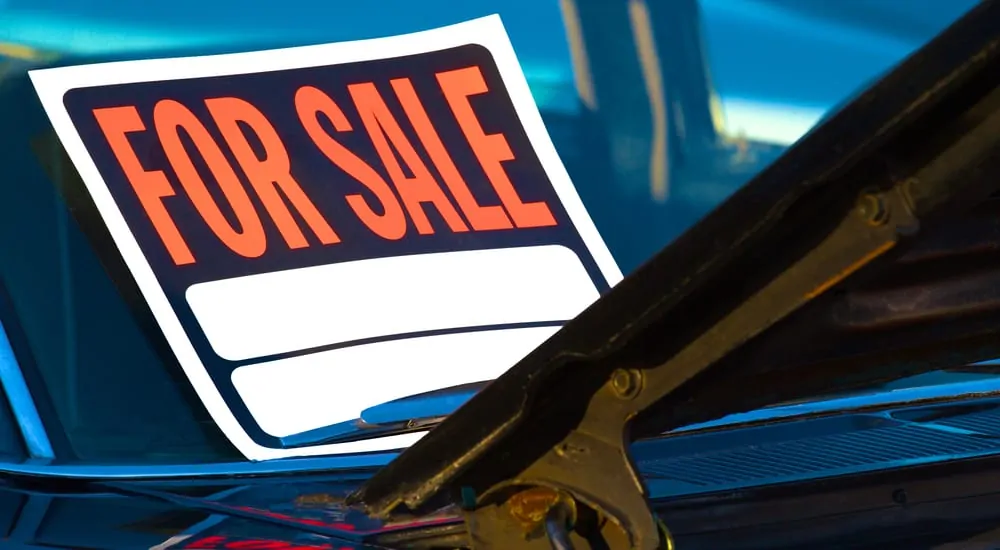If you wake up to yourself one morning and think “I want to sell my car today for cash,” you need to know it takes a little more work than that, especially if you choose to sell it privately. This is a guide that will help you make the best deal possible when trying to sell your used car, and it all starts with the right price.
The Right Price
Appraisal is the first step in selling your car privately, and the most important one. Understanding your vehicles condition and what it’s worth is important to set the right price. If you set a price that is too high, you won’t have anybody looking. Set it too low without doing some research, and you will lose out on money. The price of your car is generally dependent on the mileage, overall condition, and age.
Thankfully, finding out that perfect price is easy because of the internet. There are numerous websites online that allow you to find a price on your vehicle. The price you are looking for is probably going to be lower than what you are expecting, so keep that in mind and don’t get disheartened. An example of a resource that will help you estimate the value of your car is Kelley Blue Book.
After you have an estimate on your car’s price, you should get all the paperwork together. Better to have it early rather than waiting until last minute and rushing to get it all together. Make sure you look up the required paperwork for your state, since each one has different requirements. To be on the safe side, there are a few pieces of documentation that you should have no matter what state you are in.
Title
The title of the car is what proves and establishes legal ownership of the vehicle. Without it, it would not be a legitimate transaction and people will be less inclined to buy your vehicle. Mainly, because they do not know how you obtained that vehicle. If you don’t have the title, there is no guarantee that the car will legally be theirs in the eyes of the state. Generally, this is one piece of documentation that is always required.
Bill of Sale
The bill of sale is the second most important piece of information, seeing as it’s a document that records the transaction of the vehicle. For you, it shows the date you sold your car and information about the buyer. For the buyer, it provides specific information about the vehicle that can be cross-referenced with the Vehicle History Report. However, it does not prove ownership like the title does.
It might not be required some places for the buyer to sign a bill of sale, but it’s critical that they do. If a potential buyer does not want to sign it, look for another one. If you don’t have proof the car is no longer in your possession, you could be liable for any violations the new owner incurs.
Release of Liability
To help prevent scenarios like this, you will also need a release of liability form. This form (along with the bill of sale) prevents you from being liable for any damages incurred by the buyer. Without this form, there could be disputes over accidents that happen between the buyer and you before they get the car registered in their name.
Warranties
Another important piece of information to have are any warranty documents, if the car is under a warranty or extended warranty. Pitching these to the potential buyer could tip him/her in your favor, as opposed to Joe-Bob down the street who has the same car without a warranty.
“As-is”
On the other hand, if your car does not have any warranties you need to make that clear. Explain to the potential owner that they will assume all responsibility for repairs and damages once the vehicle has been sold to them. This “as-is” documentation can generally be included on the bill of sale.
Advertising
If you are selling your used car privately, chances are its online advertising you are looking for. A great place to do this are websites like Craigslist, which has frequent traffic from buyers looking for used cars. You need to have a good add in order to attract buyers, so take the time to make a detailed one. This way, buyers will know exactly what they are getting. Be as transparent and accurate as possible when describing the vehicle you are putting up for sale, buyers will appreciate if you are honest with them.
Important information to include is the price, mileage, condition of the vehicle, recent repairs, and modifications or upgrades that have been made to the vehicle. Depending on where you are advertising, providing a VIN number might also be a good idea so buyers can order a Vehicle History Report for the car.
Pictures
Pictures are an important part of advertising your car as well, and they need to be good quality photos. But before you even think about touching that camera, grab a sponge and bucket; now is not the time to get lazy. Clean the whole outside of the car, the entire inside of the vehicle, the wheels, and even the engine. I’m talking soap and water, vacuuming, degreaser, WD40, and whatever else can be used to clean your car. These are all places you will want to take pictures of, so make sure they look spotless.
Now that’s done, so take some pictures of everything you just cleaned. Make sure to take a lot of pictures from different angles and pick the ones you think are best. These could also be a tipping point for a sale; taking the right pictures to show you aren’t hiding anything will be noticed by buyers.
Finding the Right Buyer
Answer any questions you get by e-mail or phone, but only reserve test drives for serious buyers. Be wary, some of these buyers might have intentions of fraud, so you need to some guidelines in place.
Ask that buyers provide their full name, and if they don’t want to do that send them down the road. Something is clearly wrong, especially since it is required for legal documentation to have a full name.
Make sure buyers understand YOUR acceptable forms of payment, and if they don’t like it then send them packing too.
From personal experience, cash is king. It’s on hand, quick, and clean. You know that you got paid because they drove away and left the cash with you. Check and money orders are possible, but I wouldn’t take that risk. If you do opt to accept those forms of payment, then make sure you have it in hand before they leave. No “I owe you” or monthly payment business, make sure you get all the money then and there. Bottomline, remember that you are the one calling the shots when it comes to selling your car, and be smart and protect yourself during the sale.
Final Steps
Now it’s time to negotiate the sale. Even if you advertised that the price is firm, chances are someone will try and haggle. Two things can happen at this point: you can either tell them the price is firm and they will walk away, or they will shake on it. In my opinion, it’s always better to have an open mind. Especially since accepting a price a little lower than what you asked for to make a sale is better than losing out. Then again, that depends on the situation. If this is the second month since you put the ad up and someone finally bites, I’d take whatever (reasonable) offer they give you, since it’s been hard to get rid of the car.
The overall process may take a little work, but it’s the easiest way to do it. Just make sure you have all the documentation filled out and your preferred form of payment in hand before you let your car go. There is always the option of selling to a dealer, but selling your used car privately gives you more freedom, and it can be done the way you feel is best.




